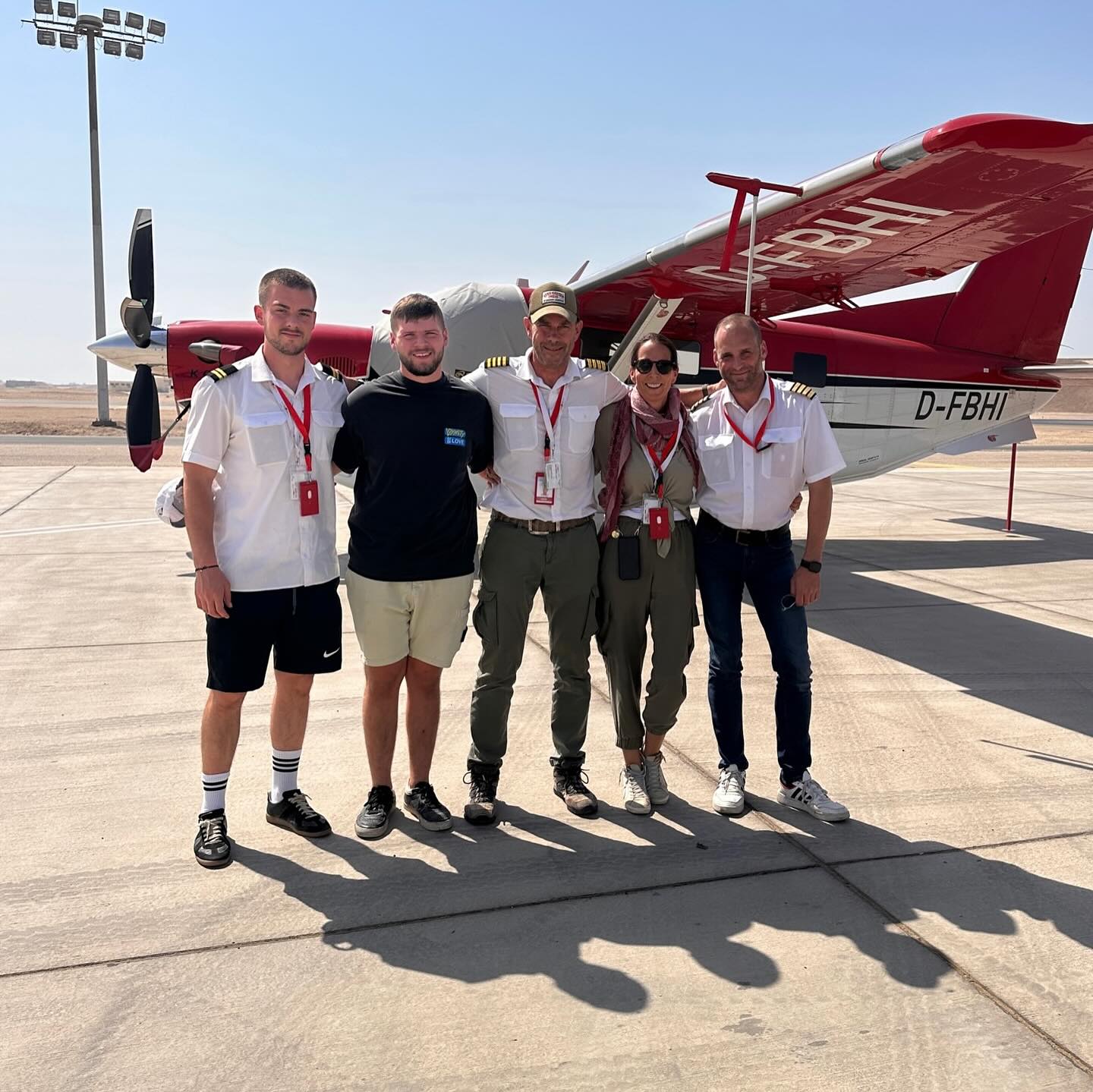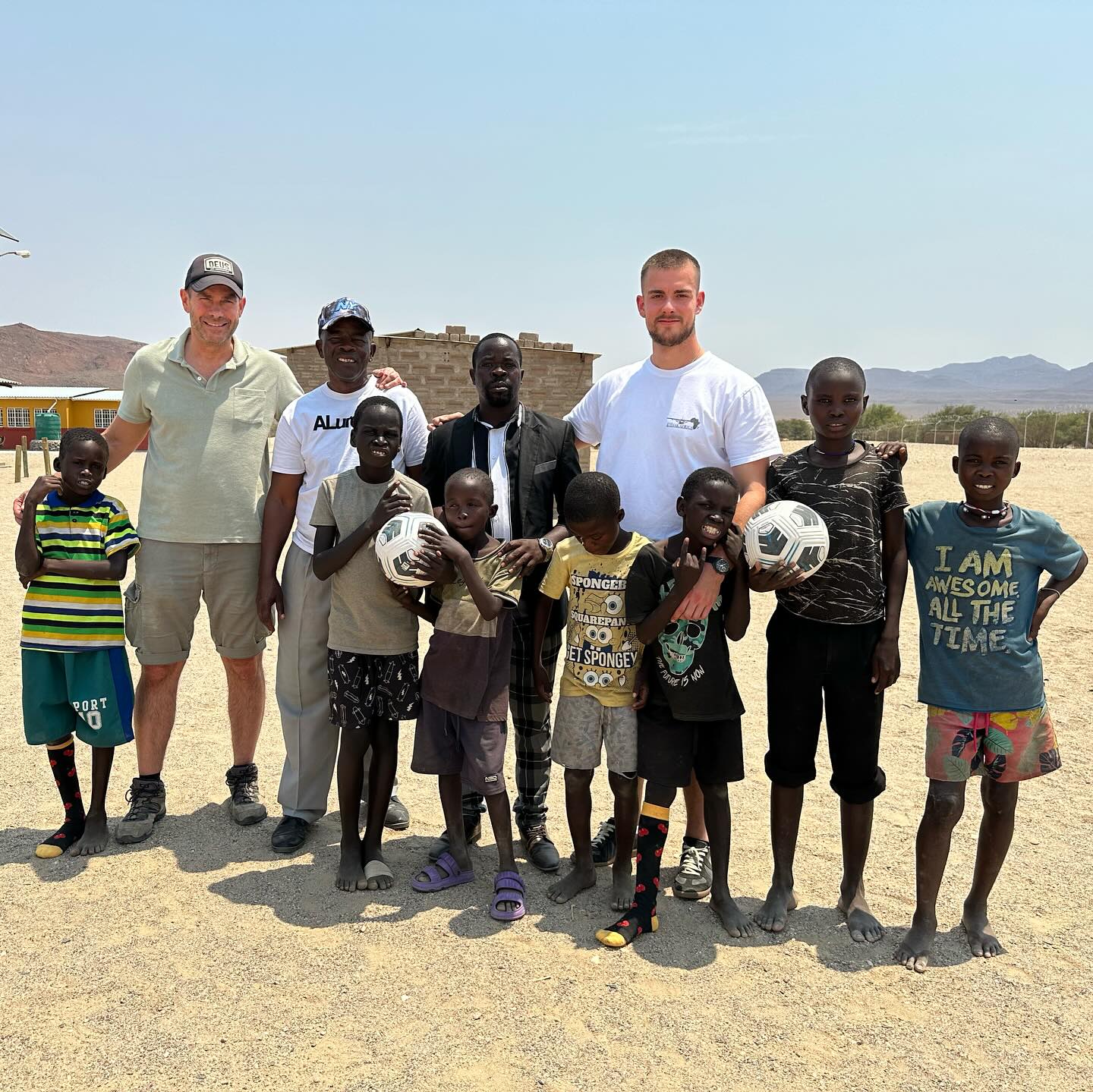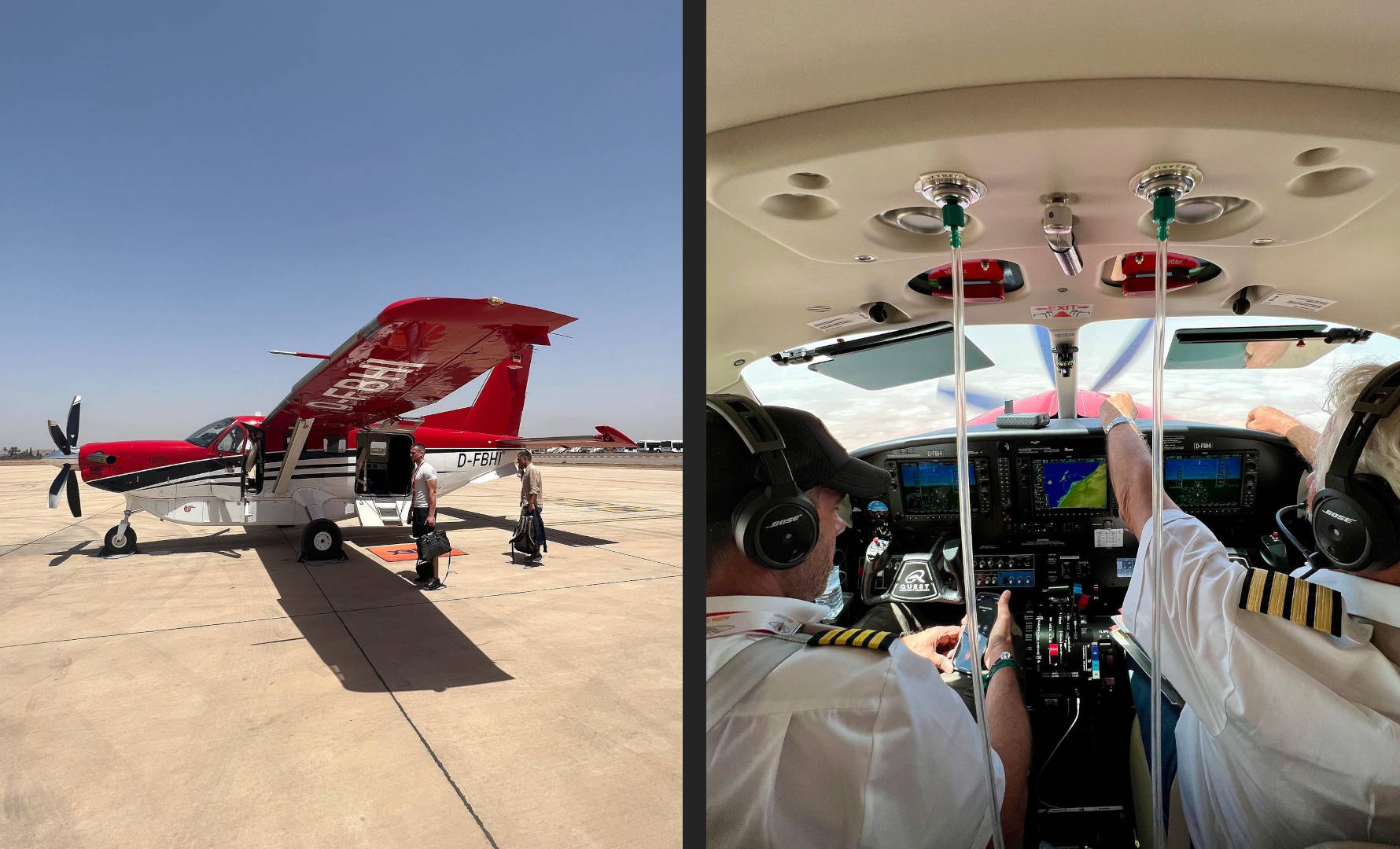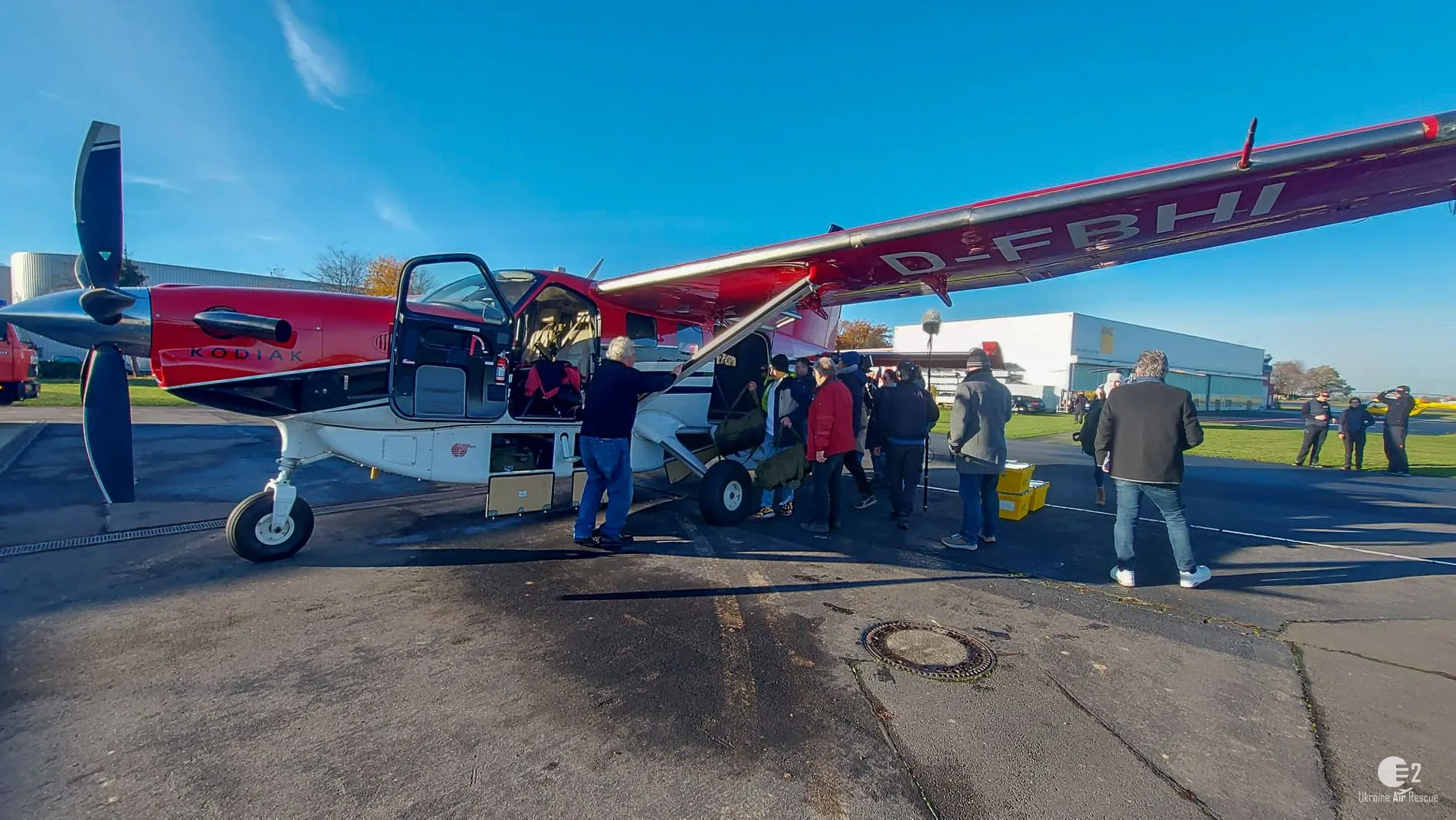The “Kodiak Africa” mission: a flying adventure brings hope
German businessman Axel König’s 2023 expedition across the African continent using his Kodiak 100 was a true adventure with humanitarian goals – assisted by the qualities of this STOL (short takeoff and landing) airplane.
An active entrepreneur from Frankfurt, König always wanted to learn to fly but never had the time…until the COVID 19 pandemic. He took advantage of the period of forced confinement to obtain his private pilot license and decided to purchase an aircraft that matched a strong desire for escape travel. After reviewing several options, he chose the Kodiak 100 for its versatility, benefitting from a sales opportunity in April 2021 offered by Rheinland Air Service – Daher’s approved German distributor and Service Center for the Kodiak and TBM.

From then on, I flew everywhere in Europe and realized it was the perfect airplane to play in the ‘Bush League.’ The DNA of this plane is more Africa than Europe because you can do a lot with it,” König explained. “I thought about flying all around the African continent, and I also wanted this flight to serve a purpose. Therefore, I started investigating within my personal network to ask about projects in Africa.

König’s research led him to Purros, Namibia in the heart of the Kaokoland, undoubtedly the wildest and most isolated region of the country and home to the Himba community of indigenous people. Although Kaokoland is beloved by tourists for its diverse wildlife, the region is tough on the people who call it home.
Education is the key to development and to the future prosperity of any community; it was for this reason that a school project caught König’s interest. The construction of a school that began some time ago by a charitable organization was intended to serve the community. However, resources ran out before the project could be completed. “There were 130 pupils, but they had almost nothing, so the school’s restoration seemed to be very urgent,” König recalls.
After establishing contact with the village’s chief and the school council, five key objectives were identified: building a water well, installing a solar panel system, renovating the school building, installing a sanitary unit, and creating a vegetable farm. König added: “Going there with our airplane enabled us to reassure our donors that the funds we raised were 100% used in the project.”
He quickly formed a crew of volunteers for the “Kodiak Africa – Flight of Hope” mission, including a video crew to inform a wider online community on Instagram.

The crew split the journey into two parts. Its first segment was from Europe to Southern Africa via the West African coastline; the second part was the return flight to Europe, covering the Eastern side of the vast African continent. The circumnavigation represented an 18,000 nautical mile journey, with 40 stopovers, wrapping up at Flugplatz Frankfurt-Egelsbach, the primary general aviation airport near Frankfurt.
The journey’s initial portion consisted of visits to Morocco, Senegal, Liberia, Ghana, Cameroon and Angola, where new contacts were established and future school projects identified. Flying at this stage remained straightforward, stopping at international airports with long asphalt runways.
The real adventure started when the crew reached Namibia a month later. The port of entry, in the Etosha National Park, serves Mokuti Etosha Lodge. Its raw, dusty, windswept runway offers a true sense of solitude in the vast African expanse. A few days later, the team reached Purros – their destination – landing in the bush on a 2,600 ft-long rust-colored laterite airstrip. This was the old Purros Airport, unused for nearly a decade. It presented typical bush flying conditions: a pilot takes the decisions and is responsible for all safety considerations.
“We realized that we could land there to be closer to the village,” König stated. “Going to Purros by car from Etosha takes 10 hours, or even more from the capital, Windhoek, so nobody’s really going to Purros. But with the Kodiak, you can go to the city in an hour to an hour and a half. An airplane like the Kodiak makes a lot of sense here.”
On-site at Purros, the Kodiak Africa crew met the local government officials, the villagers and the contractors tasked to restore the school and build the solar power plant and the water wells.
After its long journey to Africa, the Kodiak was due for a 100-hour inspection. Aviation Centre in Windhoek – the Namibian subsidiary of Rheinland Air Service – worked on the trusty Kodiak after its journey across turbulent skies and rough airstrips. At the same time, the Kodiak Africa crew began to work at the school.
König explained: “At Purros, we could see the progress of the investments that we brought one month earlier: a hole was drilled for the supply of water, driven by solar energy. We also refurbished old classrooms, built sanitary units and infrastructure for bathing. Additionally, we organized a ‘chicken shuttle’ with the Kodiak, bringing 11 hens and one cock to the chicken farm.”
Then, it was time to continue: heading southeast through South Africa, Botswana, Zambia, Rwanda, Tanzania, Kenya, Ethiopia, Eritrea, Saudi Arabia and to Egypt before returning to Europe.
All in all, the Kodiak Africa team flew another 140 flight hours without incident. “The Kodiak is definitely a robust, proper airplane, and I have it deep in my heart,” König summarized. “You can land on short, unprepared strips. You burn Jet A1 fuel to go almost everywhere, and you can use the Kodiak for many purposes: carrying cargo and passengers.”
He also praised the cabin’s comfort: a welcome asset for extended flying days with two or three back-to-back legs.

The main difficulties of the Kodiak Africa’s journey were political. Not all countries can be overflown, much less landed in, except for emergencies. Security always is an issue, but the crew dressed in pilot uniforms. This is a helpful tip for anyone considering a flying safari, König underscored: “It was less complicated when you look like a pilot, even with a ‘handmade’ crew pass.”
He recounted that the most significant adventure occurred when entering Cameroon from Accra, Ghana. “Two passports had been lost, which I just realized when we landed at Douala airport in Cameroon; the security officer wanted to see the passports, and two were missing. So, we had a problem because – in this case – we flew into a foreign country without passports, which was illegal. We were arrested, which was very interesting and tricky. It took us some 28 hours sitting in the police station, sleeping on the ground, to get out of the situation.”
At each stopover, the Kodiak Africa’s crew always tried to see whether it could help, but the main project was in Namibia because there is so much to be done there. The second project initiated during the journey was another school that previously was financed privately in Tanzania. “Our purpose was to understand the needs and try to replace broken items or give money to projects,” König said. “We also brought soccer balls, because football connects the world. Life is a balance of give-and-take, and rarely do people understand, but it’s worth thinking about.”

König’s Kodiak 100 previously was in the news with his contribution to the Ukraine Air Rescue. German private pilots founded this aid organization in March 2022 to rapidly fly medical supplies to the Ukrainian border for Ukrainian hospitals, and with minimal bureaucratic delay using private aircraft.
König plans to return to Namibia this year to follow up on the Kodiak Africa project. Those interested in joining the adventure with their own aircraft can learn more at: https://educationafrica.de/home/projekt-kodiak-in-purros-namibia/.
Kodiak Africa has its own Instagram account, with photos and video clips: kodi.ak100

